Analysis of Seismic Isolation Performance of X-Shaped Rubber Bearings (XRBs)
Abstract
:1. Introduction
2. Introduction of XRB’s Features
2.1. Design Features
2.2. Horizontal Mechanical Properties of XRB
3. Finite Element Modeling of Seismically Isolated Buildings
3.1. Design of Isolation Layer
- (1)
- The total height of the laminated rubber part of the steel plate is 85 mm;
- (2)
- The and are 17 mm and 34 mm, respectively;
- (3)
- The minimum diameter () of the bearing is 250 mm, and the large diameter () of the bearing is 370 mm;
- (4)
- The compressive stress at the minimum cross-section of the bearing is 8.50 MPa.
3.2. Structural Parameters and Finite Element Model
4. Seismic Analysis of Numerical Model
4.1. Input of Ground Motion
4.2. Analysis Results
4.2.1. Displacement Response
4.2.2. Velocity Response
4.2.3. Acceleration Response
4.3. Discussion of Results
5. Summary and Conclusions
- (1)
- The limit value of horizontal shear deformation of XRB is greater than that of TRB, which can effectively control the bearing failure under strong earthquake. XRB can effectively reduce the horizontal earthquake acceleration of the structure when the structure is subjected to a 2–3% PE earthquake with a 50-year event and a 1‱ PE earthquake with a one-year event, and has good horizontal seismic isolation performance, which can meet the need for horizontal isolation. At the same time, XRB can prevent the failure of the structure due to the over-limit deformation of the seismic isolation layer and improve the overall seismic safety of the isolated structure.
- (2)
- When the earthquake intensity exceeds the structural design ground motion intensity (for example, 1‱ PE in a one-year event), the horizontal displacement of the building will exceed the limit value of compressional shear deformation of TRB, leading to failure of the isolation layer and the collapse of the whole structure. Thus, it is necessary for the seismically isolated building to pay attention to the displacement of the isolation layer to avoid the displacement response of the earthquake exceeding the deformation limit value of TRB.
- (3)
- Although the RWP of the building can effectively prevent the deformation of the isolation layer from exceeding the limit, the superstructure will collide with the RWPs when the horizontal displacement of the isolation bearing reaches the limit displacement. When the superstructure possesses a large impulse, its collision with the RWP leads to a significant increase in collision damage and acceleration at the bottom of the superstructure. Therefore, when the bearing displacement exceeds the limit value, the seismic isolation structure with RWP can prevent the failure of the seismic isolation bearing, but it may lead to structural damage and may reduce the overall seismic isolation performance.
Author Contributions
Funding
Institutional Review Board Statement
Informed Consent Statement
Data Availability Statement
Acknowledgments
Conflicts of Interest
References
- Bento, R.; Simões, A. Seismic Performance Assessment of Buildings. Buildings 2021, 11, 440. [Google Scholar] [CrossRef]
- Wu, D.; Tesfamariam, S.; Stiemer, S.F.; Cui, J. Comparison of seismic performance of a RC frame building before and after the Wenchuan earthquake in Sichuan province. J. Perform. Constr. Facil. 2015, 29, 04014038. [Google Scholar] [CrossRef]
- Vailati, M.; Monti, G.; Bianco, V. Integrated solution-base isolation and repositioning-for the seismic rehabilitation of a preserved strategic building. Buildings 2021, 11, 164. [Google Scholar] [CrossRef]
- Hur, M.W.; Park, T.W. Seismic Performance of Story-Added Type Buildings Remodeled with Story Seismic Isolation Systems. Buildings 2022, 12, 270. [Google Scholar] [CrossRef]
- Smith, K. Frank Lloyd Wright and the Imperial Hotel: A Postscript. Art Bull. 1985, 67, 296–310. [Google Scholar] [CrossRef]
- Martel, R.R. The effects of earthquakes on buildings with a flexible first story. Bull. Seismol. Soc. Am. 1929, 19, 167–178. [Google Scholar] [CrossRef]
- Green, N.B. Flexible first-story construction for earthquake resistance. Trans. Am. Soc. Civ. Eng. 1935, 100, 645–652. [Google Scholar] [CrossRef]
- Caspe, M.S. Earthquake isolation of multistory concrete structures. J. Proc. 1970, 67, 923–932. [Google Scholar]
- Nazin, V.V. Buildings on gravitational seismoisolation system in Sebastopol. In Sixth Symposium on Earthquake Engineering; University of Roorkee: Roorkee, India, 1978; pp. 356–368. [Google Scholar]
- Seigenthaler, R. Earthquake-proof building supporting structure with shock absorbing damping elements. Schweiz. Bauztg. 1970, 20, 211–219. [Google Scholar]
- Delfosse, G.C. Full earthquake protection through base isolation system. In Proceedings of the 7th World Conference on Earthquake Engineering Istanbul Turkey, Istanbul, Turkey, 8–13 September 1980. [Google Scholar]
- Tarics, A.G.; Way, D.; Kelly, J.M. The implementation of Base Isolation for the Foothill Communities Law and Justice Center; Report to the National Science Foundation and the County of San Bernardino; Reid and Tarics Associates: San Francisco, CA, USA, 1984. [Google Scholar]
- Robinson, W.H.; Tucker, A.G. A lead-rubber shear damper. Bull. N. Z. Soc. Earthq. Eng. 1977, 10, 151–153. [Google Scholar] [CrossRef]
- Derham, C.J.; Kelly, J.M.; Thomas, A.G. Nonlinear natural rubber bearings for seismic isolation. Nucl. Eng. Des. 1985, 84, 417–428. [Google Scholar] [CrossRef]
- Wu, D.; Tesfamariam, S.; Yan, X. FRP-laminated Rubber Isolator: Theoretical Study and Shake Table Test on Isolated Building. J. Earthq. Eng. 2022. Available online: https://www.tandfonline.com/eprint/C4FWV8BGTEPSYINIJGN3/full?target=10.1080/13632469.2022.2074914 (accessed on 19 May 2022). [CrossRef]
- Almansa, F.L.; Weng, D.; Li, T.; Alfarah, B. Suitability of seismic isolation for buildings founded on soft soil. Case study of a RC building in Shanghai. Buildings 2020, 10, 241. [Google Scholar] [CrossRef]
- Wu, Y.M.; Samali, B. Shake table testing of a base isolated model. Eng. Struct. 2002, 24, 1203–1215. [Google Scholar] [CrossRef]
- Takahashi, Y.; Hoshikuma, J.I. Damage to road bridges induced by ground motion in the 2011 Great East Japan Earthquake. J. JSCE 2013, 1, 398–410. [Google Scholar] [CrossRef] [Green Version]
- Li, Y.; Zong, Z.; Huang, X.; Xia, J.; Liu, L. Experimental study on mechanical properties of high damping rubber bearing model. In IOP Conference Series: Earth and Environmental Science. IOP Publ. 2017, 61, 012105. [Google Scholar]
- Montuori, G.M.; Mele, E.; Marrazzo, G.; Brandonisio, G.; De Luca, A. Stability issues and pressure–shear interaction in elastomeric bearings: The primary role of the secondary shape factor. Bull. Earthq. Eng. 2016, 14, 569–597. [Google Scholar] [CrossRef]
- Kurihara, M.; Nishimoto, K.; Shigeta, M.; Tachi, Y. A Study on Response during Large Deformation in a Seismic Isolation Systemof Nuclear Island Buildings. JSME Int. J. Ser. 3 Vib. Control Eng. Eng. Ind. 1990, 33, 404–411. [Google Scholar]
- Wu, D.; Lin, J.T.; Xiong, Y.; Cui, J. Influence of site conditions on seismic performance of isolated high-speed railroad bridges. Adv. Struct. Eng. 2022. [Google Scholar] [CrossRef]
- Li, H.; Xie, Y.; Gu, Y.; Tian, S.; Yuan, W.; DesRoches, R. Shake table tests of highway bridges installed with unbonded steel mesh reinforced rubber bearings. Eng. Struct. 2020, 206, 110124. [Google Scholar] [CrossRef]
- Wang, S.; Yuan, Y.; Tan, P.; Zhu, H.; Luo, K. Experimental study on mechanical properties of casting high-capacity polyurethane elastomeric bearings. Constr. Build. Mater. 2020, 265, 120725. [Google Scholar] [CrossRef]
- Choi, E.; Nam, T.H.; Cho, B.S. A new concept of isolation bearings for highway steel bridges using shape memory alloys. Can. J. Civ. Eng. 2005, 32, 957–967. [Google Scholar] [CrossRef]
- Du, H.; Wang, Y.; Han, M.; Ibarra, L.F. Experimental seismic performance of a base-isolated building with displacement limiters. Eng. Struct. 2021, 244, 112811. [Google Scholar] [CrossRef]
- Clark, P.W.; Aiken, I.D.; Kelly, J.M.; Higashino, M.; Krumme, R. Experimental and analytical studies of shape-memory alloy dampers for structural control. Smart Struct. Mater. 1995 Passiv. Damping SPIE 1995, 2445, 241–251. [Google Scholar]
- Desroches, R.; Delemont, M. Seismic retrofit of simply supported bridges using shape memory alloys. Eng. Struct. 2002, 24, 325–332. [Google Scholar] [CrossRef]
- Ismail, M.; Rodellar, J.; Pozo, F. An isolation device for near-fault ground motions. Struct. Control Health Monit. 2014, 21, 249–268. [Google Scholar] [CrossRef]
- Kelly, J.M.; Konstantinidis, D. Mechanics of Rubber Bearings for Seismic and Vibration Isolation; John Wiley & Sons,: Hoboken, NJ, USA, 2011. [Google Scholar]
- Takabayashi, K. Failure test of laminated rubber bearings with various shapes. In Proceedings of the World Conference on Earthquake Engineering, Madrid, Spain, 19–24 July 1992; Volume 1, p. 2277. [Google Scholar]
- Fujita, T.; Fujita, S.; Tazaki, S.; Yohshizawa, T.; Suzuki, S. Research, development and implement of rubber bearings for seismic isolation. JSME Int. J. Ser. III 1990, 33, 394–403. [Google Scholar]
- Wu, D.; Xiong, Y.; Zhou, F.L.; Cui, J.; Huo, W.G.; Jiang, G.P. Special Shaped Isolation Bearing with High Bearing Capacity. CN201520313147.6, 4 November 2015. (In Chinese). [Google Scholar]
- Koh, C.G.; Kelly, J.M. A simple mechanical model for elastomeric bearings used in base isolation. Int. J. Mech. Sci. 1988, 30, 933–943. [Google Scholar] [CrossRef]
- Wu, D.; Tesfamariam, S.; Stiemer, S.F.; Qin, D. Seismic fragility assessment of RC frame structure designed according to modern Chinese code for seismic design of buildings. Earthq. Eng. Eng. Vib. 2012, 11, 331–342. [Google Scholar] [CrossRef]
- National Standard of the People’s Republic of China (NSPRC). Seismic Ground Motion Parameters Zonation Map of China; China Standards Publishing House: Beijing, China, 2015. (In Chinese) [Google Scholar]
- National Standard of the People’s Republic of China (NSPRC). Code for Seismic Design of Buildings (GB50011-2010); Ministry of Construction of the People’s Republic of China: Beijing, China, 2010. (In Chinese)
- National Standard of the People’s Republic of China (NSPRC). In Code for Design of Concrete Structures (GB 50010-2010); Ministry of Construction of the People’s Republic of China: Beijing, China, 2010. (In Chinese)
- Park, R.; Kent, D.C.; Sampson, R.A. Reinforced concrete members with cyclic loading. J. Struct. Div. 1972, 98, 1341–1360. [Google Scholar] [CrossRef]
- Karsan, I.D.; Jirsa, J.O. Behavior of concrete under compressive loadings. J. Struct. Div. 1969, 95, 2543–2564. [Google Scholar] [CrossRef]
- Yassin, M.H.M. Nonlinear Analysis of Prestressed concrete Structures under Monotonic and Cyclic Loads. Ph.D. Dissertation, Department of Civil Engineering, University of California, Berkeley, CA, USA, 1994. [Google Scholar]
- Menegotto, M. Method of analysis for cyclically loaded RC plane frames including changes in geometry and non-elastic behavior of elements under combined normal force and bending. In Proceedings of the IABSE Symposium on Resistance and Ultimate Deformability of Structures Acted on by Well Defined Repeated Loads, Lisbon, Portugal, 1973; pp. 15–22. Available online: https://www.e-periodica.ch/digbib/view?pid=bse-re-001:1973:13::42#60 (accessed on 19 May 2022).
- Filippou, F.C.; Popov, E.P.; Bertero, V.V. Effects of Bond Deterioration on Hysteretic Behavior of Reinforced Concrete Joints; Report EERC 83-19; Earthquake Engineering Research Center, University of California: Berkeley, CA, USA, 1983. [Google Scholar]
- Mazzoni, S.; McKenna, F.; Scott, M.H.; Fenves, G.L. OpenSees Command Language Manual; Pacific Earthquake Engineering Research (PEER) Center: Berkeley, CA, USA, 2006; Volume 264, pp. 137–158. [Google Scholar]



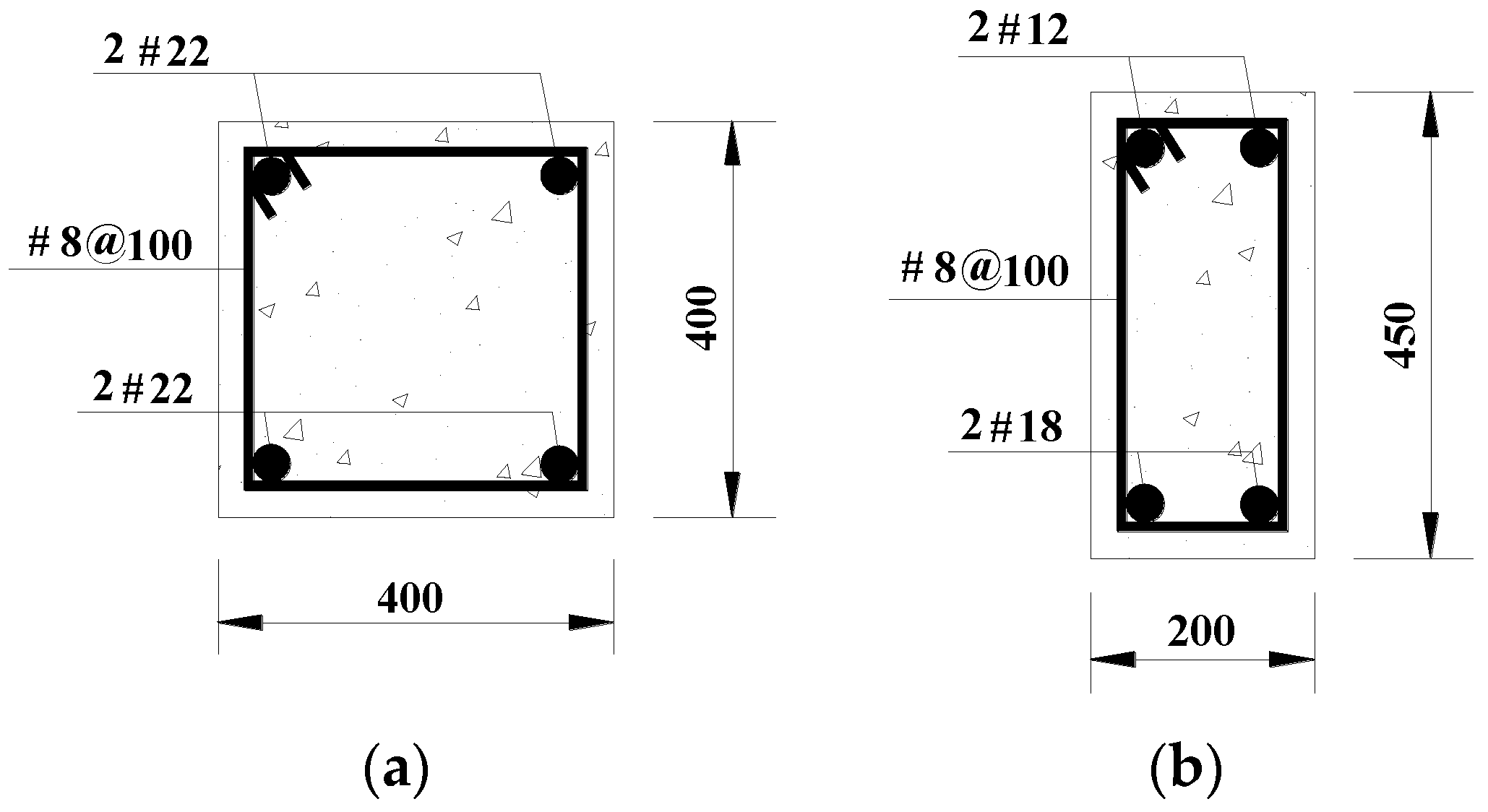

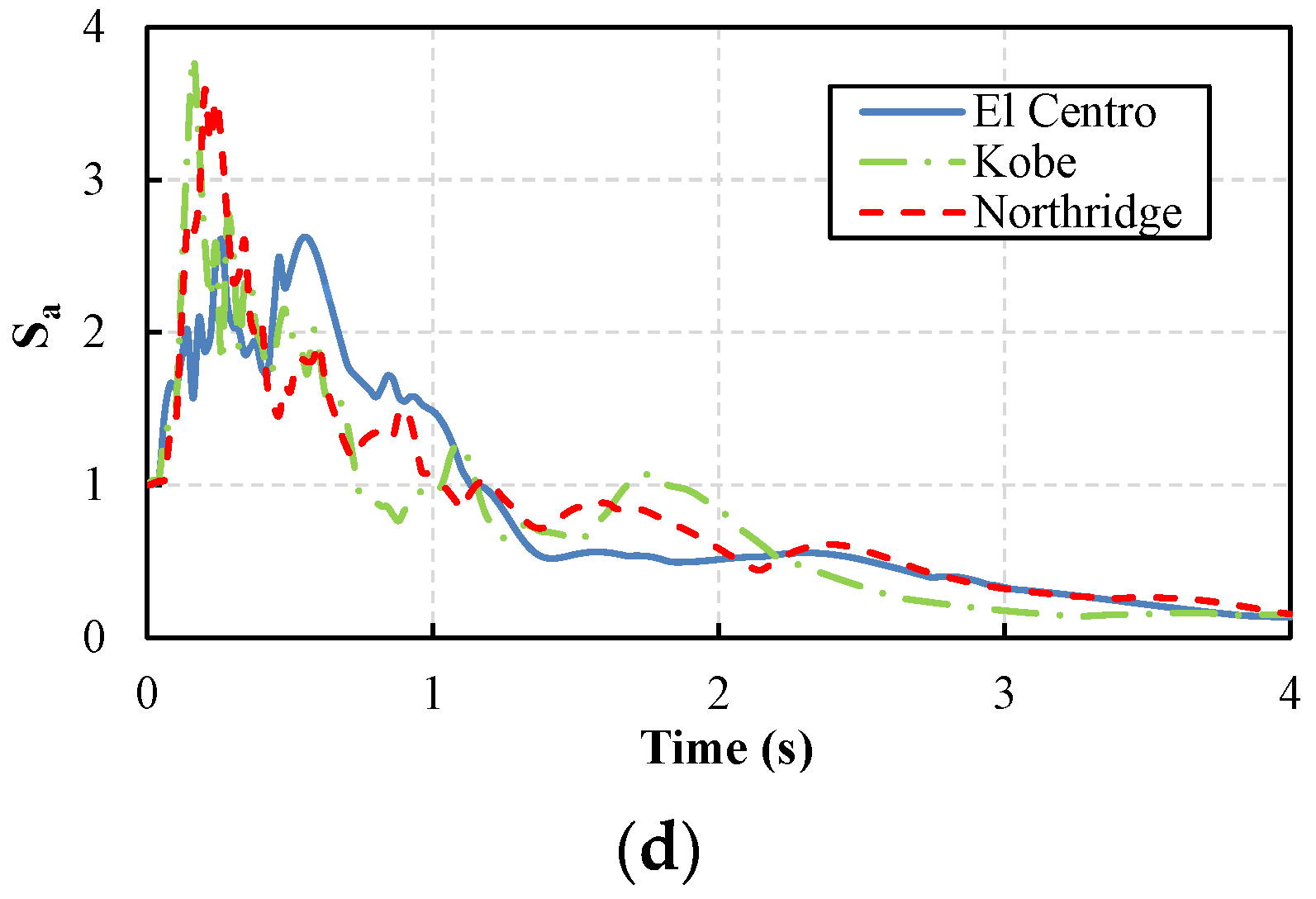



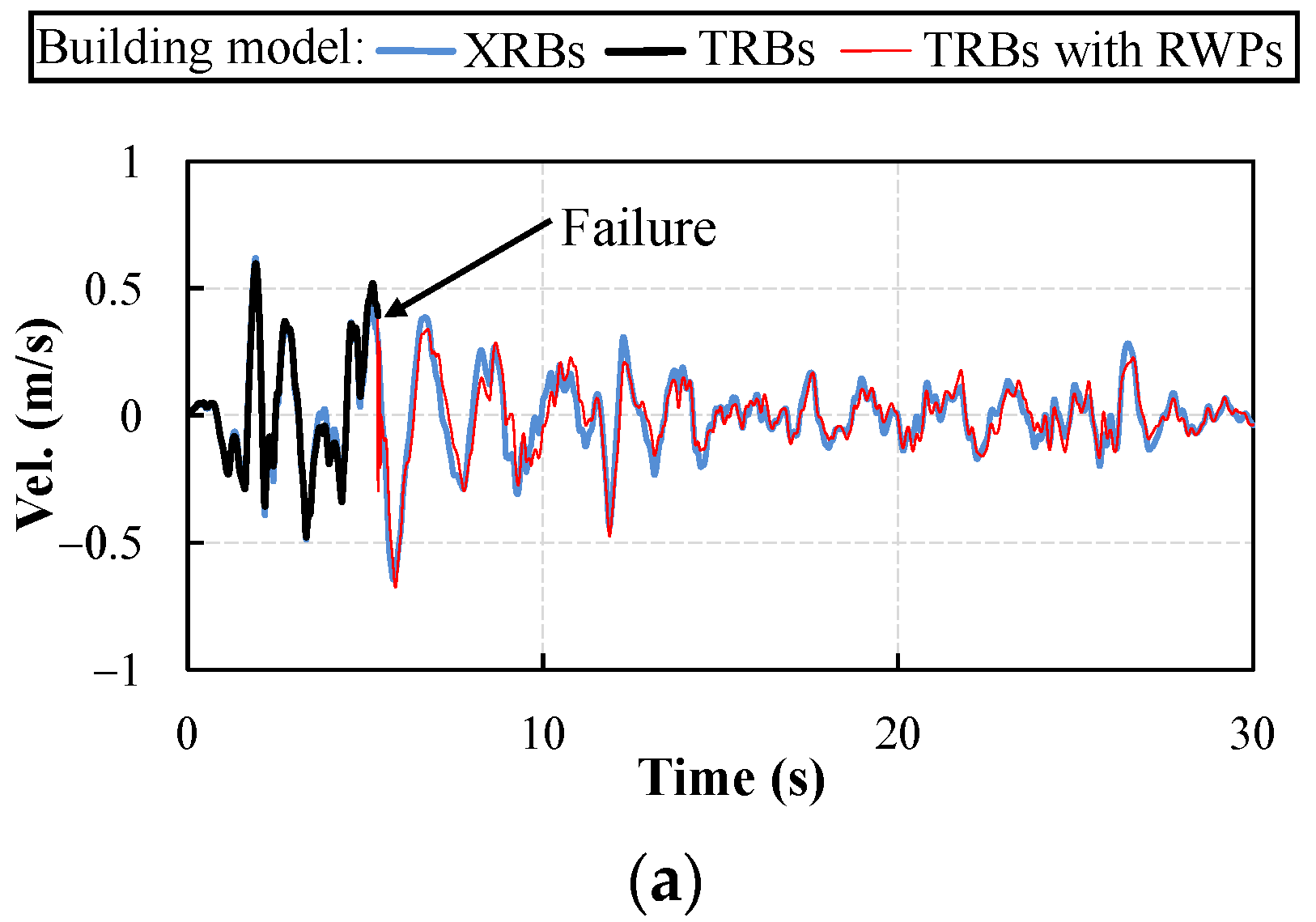
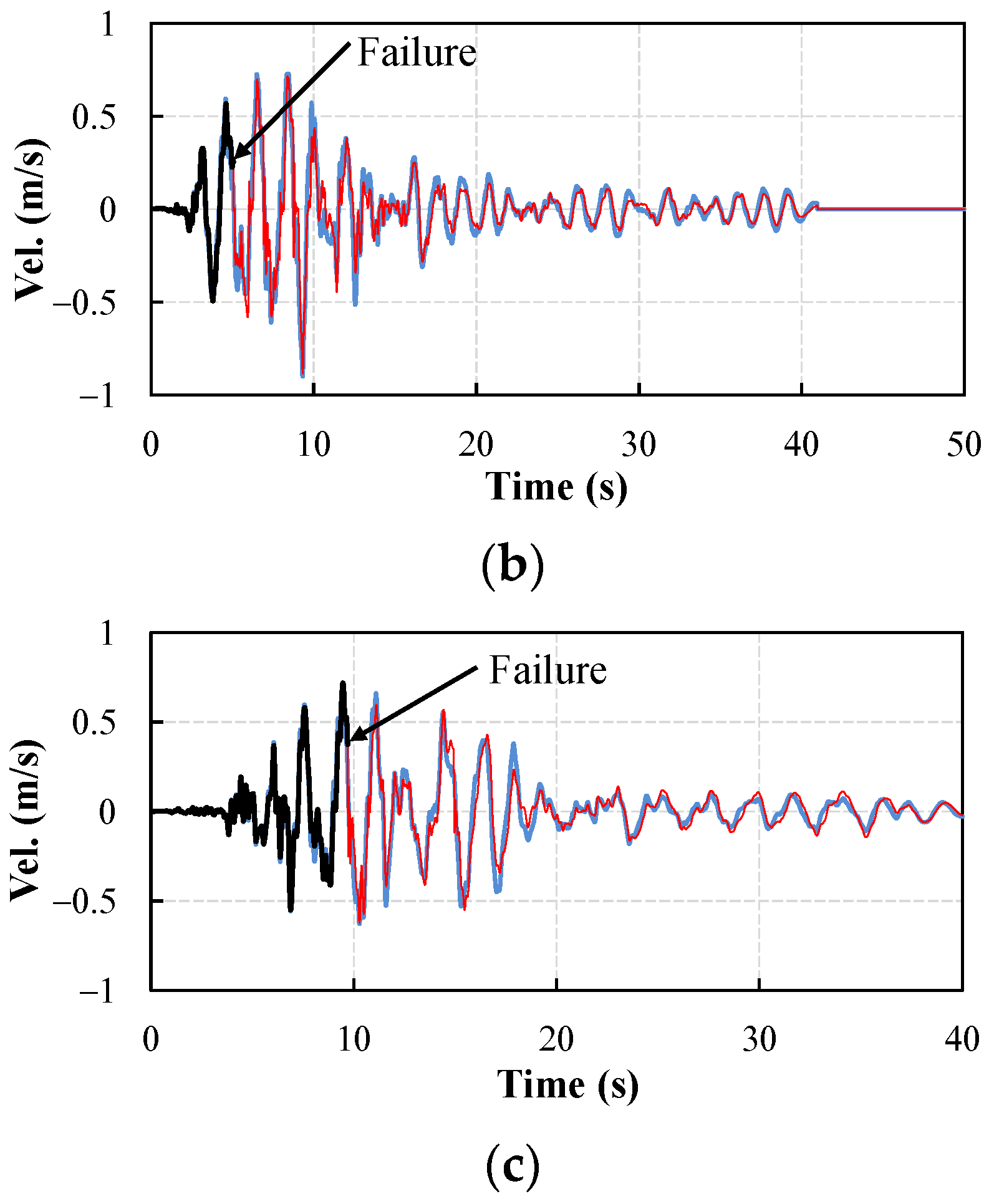
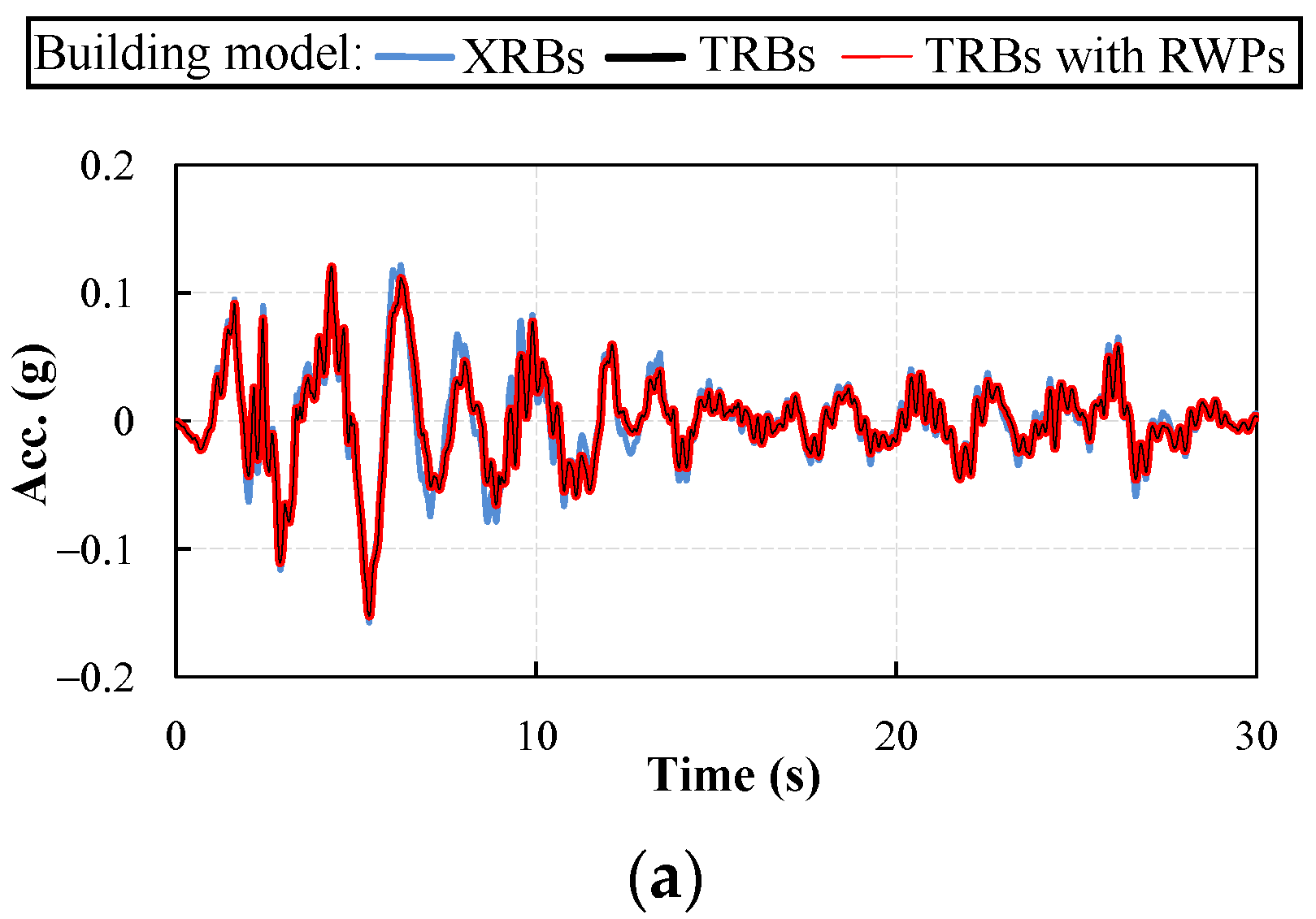
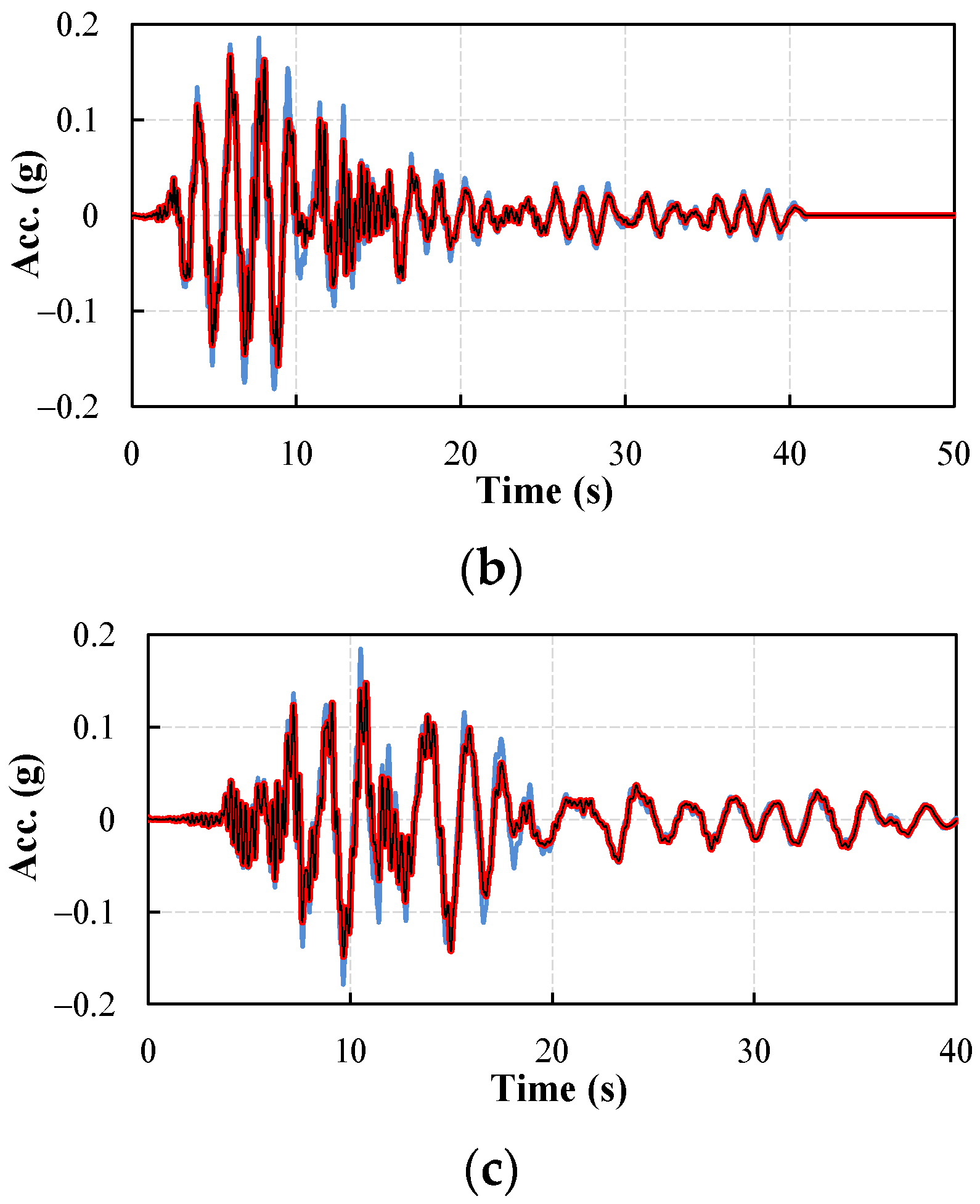
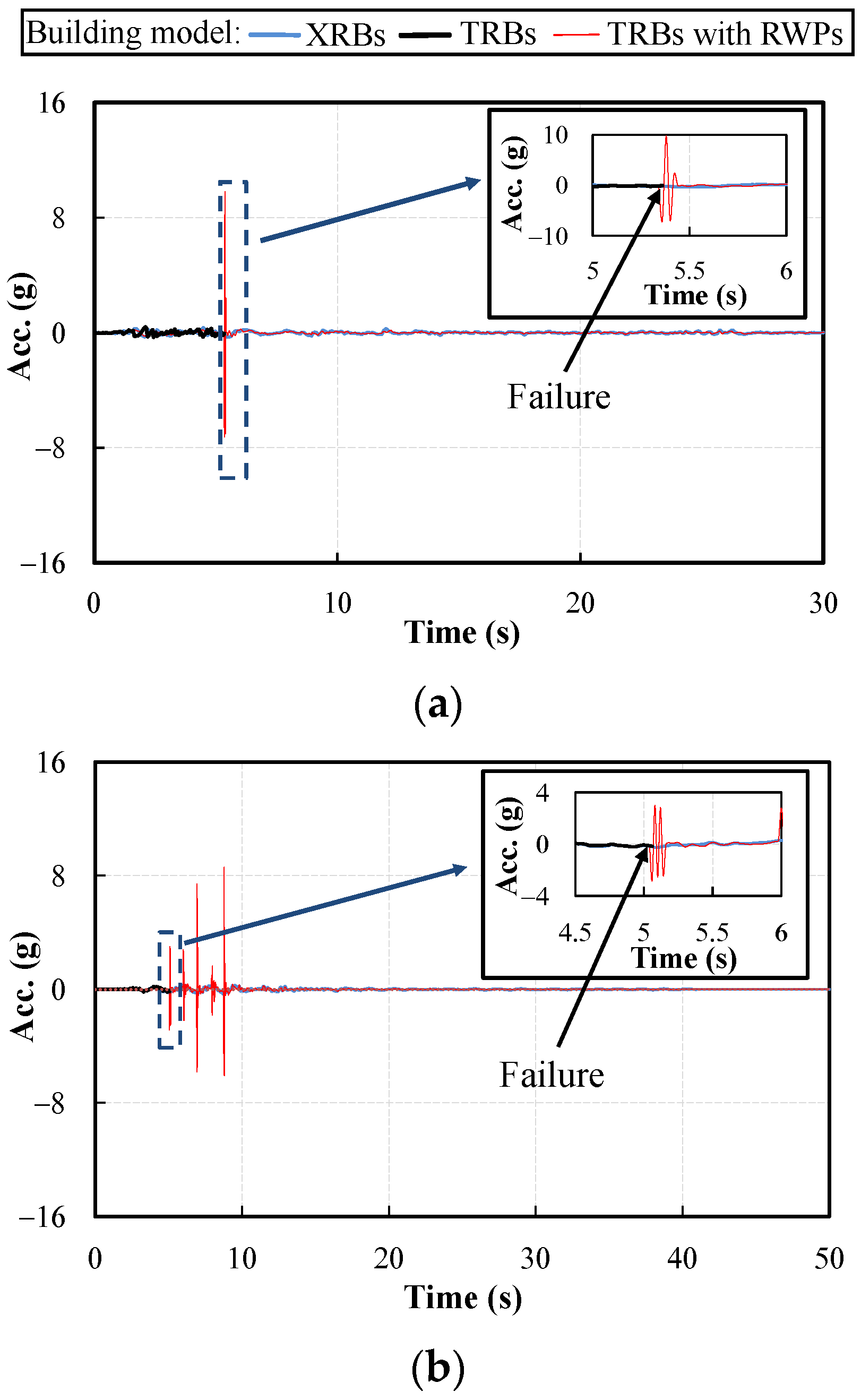

| Parameter | Value | Unit |
|---|---|---|
| Elastic modulus of concrete | 30,000 | Mpa |
| Axial compressive strength of concrete | 20.1 | Mpa |
| Elastic modulus of reinforcement | 200,000 | Mpa |
| Yield strength of reinforcement | 335 | Mpa |
| 1st NP of model using XRBs | 1.80 | s |
| 1st NP of model using TRBs | 1.96 | s |
Publisher’s Note: MDPI stays neutral with regard to jurisdictional claims in published maps and institutional affiliations. |
© 2022 by the authors. Licensee MDPI, Basel, Switzerland. This article is an open access article distributed under the terms and conditions of the Creative Commons Attribution (CC BY) license (https://creativecommons.org/licenses/by/4.0/).
Share and Cite
Wu, D.; Lin, J.; Xiong, Y. Analysis of Seismic Isolation Performance of X-Shaped Rubber Bearings (XRBs). Buildings 2022, 12, 1102. https://doi.org/10.3390/buildings12081102
Wu D, Lin J, Xiong Y. Analysis of Seismic Isolation Performance of X-Shaped Rubber Bearings (XRBs). Buildings. 2022; 12(8):1102. https://doi.org/10.3390/buildings12081102
Chicago/Turabian StyleWu, Di, Jingtian Lin, and Yan Xiong. 2022. "Analysis of Seismic Isolation Performance of X-Shaped Rubber Bearings (XRBs)" Buildings 12, no. 8: 1102. https://doi.org/10.3390/buildings12081102
APA StyleWu, D., Lin, J., & Xiong, Y. (2022). Analysis of Seismic Isolation Performance of X-Shaped Rubber Bearings (XRBs). Buildings, 12(8), 1102. https://doi.org/10.3390/buildings12081102






